If you have a furry friend at home who needs a little guidance in the training department, you may be considering investing in a dog training collar. But with so many options available, it can be overwhelming to know which one is right for your pup. In this article, we’ll take a closer look at the different types of dog training collars available, helping you to make an informed decision that will ensure effective and humane training for your beloved four-legged companion. So, whether you have a mischievous puppy or a stubborn older dog, read on to discover the collar that will help you communicate effectively and establish a strong bond with your furry friend.
Prong Collars
Description
Prong collars, also known as pinch collars, are designed to provide an effective way of controlling your dog during walks or training sessions. They consist of a series of interlocking metal links with metal prongs on the inside. These prongs apply pressure to the dog’s neck when tension is applied to the leash.
How They Work
When the dog pulls or lunges, the prongs on the collar pinch the skin on the neck, creating discomfort. The pressure created by the prongs mimics the natural way a mother dog corrects her puppies by gently biting the scruff of their necks. This momentarily interrupts the dog’s behavior and allows you to redirect their attention.
Pros
One of the main advantages of prong collars is their immediate and effective response. When used correctly, they can provide a clear signal to your dog, promoting more controlled behavior. Prong collars can be particularly useful for strong-willed dogs that tend to pull excessively or are prone to aggression. They allow for better control without relying on excessive force.
Cons
Despite their benefits, prong collars are not suitable for every dog or owner. They may cause discomfort or even pain if not used properly or fitted correctly. Additionally, some people raise concerns about the potential for injury or neck damage when using prong collars excessively or with excessive force. It is crucial to consult a professional dog trainer to ensure the correct usage and fit of a prong collar.
Potential Controversy
Prong collars have sparked controversy among dog owners and trainers. While supporters argue that when used correctly, prong collars are a valuable training tool, opponents believe they are inhumane and can cause physical and emotional harm to dogs. The key to managing this controversy lies in education and responsible use. It is essential to thoroughly understand how to use a prong collar before employing it as a training aid.
Martingale Collars
Description
Martingale collars, also known as limited-slip collars, are designed to provide gentle control and prevent dogs from slipping out of their collars. They consist of a length of material that encircles the dog’s neck, with a smaller loop for the leash attachment.
How They Work
Unlike traditional collars that tighten when pulled on, martingale collars have a limited-slipping action. When tension is applied to the leash, the smaller loop on the collar tightens slightly, preventing the dog from escaping while avoiding excessive pressure on the neck.
Pros
Martingale collars offer a safer and more secure alternative to traditional buckle collars, especially for dogs with narrower heads or those prone to slipping out of their collars. They provide better control without the need for excessive force, making them a popular choice for dog owners who prefer gentle training methods.
Cons
One limitation of martingale collars is that they may not be suitable for dogs that pull excessively. While they can prevent dogs from slipping out of their collars, they do not offer the same level of control as prong collars or head collars. Additionally, improper use or fit of a martingale collar may cause discomfort or injury to the dog.
Ideal Uses
Martingale collars are well-suited for dogs that have a tendency to escape from traditional collars or have necks that are larger than their heads. They are also an excellent option for dogs with sensitive or easily irritated skin, as they distribute pressure more evenly.
Shock Collars
Description
Shock collars, also referred to as electronic collars or e-collars, are devices that deliver electrical stimulation to dogs. They consist of a collar worn around the dog’s neck and a remote control or automatic trigger that allows the owner to deliver a mild shock to the dog.
How They Work
When the dog exhibits unwanted behavior, such as barking excessively or not obeying commands, the owner can trigger the shock collar to deliver a static shock to the dog’s neck. The intensity of the shock can be adjusted to suit the dog’s sensitivity level and the severity of the behavior.
Pros
One advantage of shock collars is their ability to provide immediate feedback to the dog, helping to correct unwanted behaviors more effectively. When used correctly, they can assist in training dogs to respond to commands and discourage behaviors such as excessive barking or chasing.
Cons
Shock collars have faced criticism due to concerns about their potential for causing pain or distress to dogs. Improper use or excessive levels of shock can lead to emotional and physical harm. Some dogs may become fearful or anxious as a result of the shocks, which can negatively impact their overall well-being.
Different Levels of Stimulation
Shock collars typically offer multiple levels of stimulation, ranging from very mild to more intense. It is crucial to start with the lowest level and gradually increase it if necessary, while always monitoring the dog’s response. The goal should be to find the lowest effective level of stimulation to achieve the desired behavior modification.
Precautions and Safety
When using shock collars, it is essential to follow safety guidelines. Avoid leaving the collar on for extended periods to minimize discomfort or potential injury. It is also crucial to consult with a professional dog trainer or behaviorist to learn proper usage techniques and to determine if a shock collar is the appropriate training tool for your dog.
Prong vs. Martingale vs. Shock Collars
Training Styles
The choice between prong, martingale, and shock collars largely depends on your preferred training style. Prong collars and shock collars are often associated with more aversive techniques, while martingale collars and other gentle training tools align with positive reinforcement and reward-based methods.
Effectiveness
All three types of collars can be effective when used correctly and in the appropriate training context. Prong collars are known for their immediate response and are often used for dogs that require more control during walks. Martingale collars provide secure control without the need for aversive techniques, making them suitable for dogs that tend to escape from traditional collars. Shock collars can provide quick feedback in situations that require immediate behavior modification.
Suitable Breeds
Different breeds and individual dogs may respond differently to various collar types. Prong collars may be more suitable for larger or stronger breeds that require firm control, while martingale collars can be used for a wide range of breeds and sizes. Shock collars are often recommended for more stubborn or independent dogs that require additional motivation.
Comfort and Fit
Comfort and fit are crucial considerations for any collar. Prong collars should be fitted snugly, ensuring that the prongs rest evenly against the dog’s neck without causing discomfort or injuring the skin. Martingale collars should have a snug fit but allow for comfortable movement. Shock collars should be adequately fitted to prevent rubbing or irritation.
Training Philosophy
The choice of collar type also reflects your training philosophy. Positive reinforcement trainers often favor martingale collars or other gentle training tools that focus on rewarding desired behaviors rather than using aversive techniques. Balanced trainers may advocate for the use of prong or shock collars in conjunction with positive reinforcement, emphasizing the importance of fair and consistent training methods.
Head Collars
Description
Head collars, also known as head halters or gentle leaders, provide control over a dog’s head, allowing you to direct their movements. They consist of a strap that encircles the dog’s muzzle and another strap that goes behind the ears, connecting to the leash.
How They Work
When the dog pulls or lunges, the pressure from the leash is distributed across the head and neck, turning the dog’s attention towards you. This redirection of attention helps discourage pulling and promotes more relaxed walking or training sessions.
Pros
One of the significant advantages of head collars is their ability to provide immediate control over a dog’s pulling behavior. Compared to traditional collars or harnesses, head collars offer greater control by controlling the dog’s head and redirecting their focus. They are particularly effective for large or strong dogs that tend to pull excessively.
Cons
Some dogs may find head collars uncomfortable or resist wearing them initially. It is crucial to introduce the head collar gradually, using positive reinforcement techniques to associate it with positive experiences. Additionally, head collars should not be used for long periods as they may cause discomfort or frustration for some dogs.
Effective Training Techniques
When using a head collar, it is essential to pair it with positive reinforcement training techniques. Reward your dog for walking calmly and redirecting their attention towards you. By associating the head collar with positive experiences and consistent training, you can help your dog learn to walk more politely on a leash.
Step-in Harnesses
Description
Step-in harnesses are designed to be easy to put on and remove from your dog. They consist of straps that wrap around the dog’s chest and usually have a D-ring for leash attachment on the back.
How They Work
To put on a step-in harness, you simply step your dog’s front legs into the harness, adjust the straps for a snug fit, and then clip the leash to the D-ring. Step-in harnesses distribute the pulling force over the chest, reducing the strain on the neck and providing better control.
Pros
Step-in harnesses are an excellent option for dogs that have a tendency to slip out of traditional collars or pull excessively. They distribute pressure more evenly, making walks more comfortable for both you and your furry friend. The easy-to-use design makes them a popular choice for owners who appreciate convenience.
Cons
One limitation of step-in harnesses is that they may not provide as much control as prong collars or head collars, especially for dogs with significant pulling tendencies. Some dogs may also find the sensation of having straps around their chests unfamiliar or uncomfortable initially. Proper fitting and gradual desensitization can help overcome these issues.
Ideal Breeds
Step-in harnesses are suitable for a wide range of dog breeds, particularly those with smaller heads and narrow necks. They are often recommended for breeds such as Chihuahuas, Dachshunds, or Greyhounds, which may be prone to slipping out of traditional collars.
Training Benefits
Step-in harnesses can be an effective tool for leash training, especially when combined with positive reinforcement techniques. By reducing the strain on the neck and providing better control, they allow for more comfortable and enjoyable walks, promoting better behavior overall.
Buckle Collars
Description
Buckle collars, also known as flat collars or everyday collars, are the most common type of collar used for dogs. They consist of a strip of material with a buckle or snap closure, a D-ring for leash attachment, and sometimes additional features such as name tags or charms.
How They Work
Buckle collars are straightforward to use. You adjust the collar to properly fit your dog’s neck, then buckle or snap it securely. The D-ring serves as an attachment point for the leash or identification tags.
Pros
Buckle collars are an essential accessory for every dog, providing an easy and reliable way to attach identification tags or licenses. They are suitable for daily wear and can be left on your dog comfortably throughout the day. They are available in a wide variety of styles and materials, allowing you to choose the one that best suits your dog’s personality.
Cons
While buckle collars are suitable for everyday use, they may not offer the same level of control as other collar types, especially for dogs that tend to pull. Additionally, some dogs, particularly those with long fur, may experience matting or discomfort if the collar is not regularly checked or adjusted.
Training Applications
Buckle collars can be used as a training tool for basic obedience commands, such as “sit” or “stay.” By associating the collar with positive reinforcement and consistently using it during training sessions, your dog will learn to respond to your commands. However, for more challenging behavioral issues or strong dogs, alternative collar types, such as prong or head collars, may be more effective.
Choke Chains
Description
Choke chains, also known as slip collars or check chains, are collars that tighten when tension is applied to the leash, creating pressure on the dog’s neck. They consist of a chain loop with two rings, allowing the collar to tighten or release.
How They Work
When the dog pulls or lunges, the choke chain tightens, creating an uncomfortable sensation and causing the dog to stop or redirect their behavior. The effectiveness of a choke chain relies on the correct fit and proper technique. When used correctly, it offers better control and can discourage pulling behaviors.
Pros
Choke chains can be an effective tool for controlling dogs that pull excessively. When used correctly, they can promote immediate behavior correction and help establish better leash manners. Choke chains are often preferred by trainers and behaviorists as an alternative to more extreme measures, such as prong or shock collars.
Cons
Misuse or improper fitting of a choke chain can lead to physical harm or distress for the dog. It is crucial to remember that the primary purpose of a choke chain is to discourage pulling, not to choke or harm the dog. Some dog owners and trainers raise concerns about the potential for injury to the dog’s neck or the risk of exacerbating existing respiratory issues in certain breeds. Responsible use and consultation with a professional are essential when choosing to utilize a choke chain.
Controversy Surrounding Use
Choke chains have been a subject of controversy and debate within the dog training community. Opponents argue that they can cause harm, discomfort, or even injury to the dog, both physically and psychologically. It is important to consider all training options, consult with professionals, and ensure proper technique and fit if using a choke chain.
Vibration Collars
Description
Vibration collars, also known as vibrating collars or pager collars, offer a non-aversive alternative to traditional shock collars. Instead of delivering an electric shock, these collars emit a vibration or a gentle pulsating sensation to get the dog’s attention.
How They Work
When you press a button on the remote control, the collar emits a vibration or mild pulsating sensation on the dog’s neck. This gentle stimulation serves as a cue to redirect the dog’s attention or reinforce desired behavior.
Pros
Vibration collars are often favored by dog owners who prefer more positive and gentle training methods. They offer an alternative to shock collars, providing a milder form of stimulation that can effectively redirect the dog’s behavior or reinforce desired actions. Vibration collars are particularly useful for sensitive or anxious dogs that may be more reactive to traditional correction techniques.
Cons
While vibration collars are generally considered less aversive than shock collars, some dogs may still find the sensation uncomfortable or distressing. It is crucial to select the appropriate intensity level and gradually introduce the collar to your dog. Additionally, vibration collars may not be as effective for dogs that are highly distracted or have a high threshold for stimulation.
Suitable Training Situations
Vibration collars can be effective in various training situations, such as recall training or addressing mild behavioral problems. They are particularly useful for dogs that are easily startled or require a more subtle form of communication.
Alternative Training Methods
While vibration collars can be a valuable training tool, it is important to remember that they should be used in conjunction with positive reinforcement techniques. Pair the vibration with rewards, such as treats or praise, to reinforce desired behaviors. Consistency, patience, and understanding your dog’s individual needs are key to successful training.
Citronella Collars
Description
Citronella collars are designed to deter unwanted behaviors using a burst of citronella spray. They feature a small canister filled with citronella, which can be activated manually or automatically when the dog exhibits specific behaviors.
How They Work
When the dog barks excessively or engages in other unwanted behaviors, the citronella collar releases a burst of citronella spray near the dog’s face. The smell and sensation of citronella deter the dog from continuing the behavior.
Pros
Citronella collars offer a humane and non-aversive way to discourage unwanted behaviors without causing harm or discomfort to the dog. The scent of citronella is typically unpleasant for dogs, serving as a distraction and redirecting their attention. Citronella collars are often favored by dog owners who prefer more natural and odor-based training methods.
Cons
While the smell of citronella is generally harmless to dogs, some dogs may be more sensitive and find it distressing. Additionally, citronella collars may not be as effective for dogs that are highly motivated or persistent in their unwanted behaviors. It is important to consider your dog’s individual temperament and consult with a professional trainer before using a citronella collar.
Training Applications
Citronella collars can be effective for training dogs to stop excessive barking or other unwanted behaviors, such as jumping or digging. By associating the citronella spray with the behavior, the dog learns to modify their actions to avoid the unpleasant sensation and smell.
In conclusion, there are various types of dog training collars available, each with its own set of advantages and considerations. Prong collars offer immediate control but require proper usage and can be controversial. Martingale collars provide secure control without discomfort, but may not offer sufficient control for strong pullers. Shock collars offer immediate feedback, but their use should be approached with caution and responsibility. Head collars provide immediate control over pulling but may require gradual introduction. Step-in harnesses distribute pressure evenly and are ideal for dogs prone to slipping out of collars. Buckle collars are suitable for everyday wear and basic training. Choke chains offer immediate control but should be used responsibly and fitted correctly. Vibration collars provide a non-aversive alternative to shock collars, while citronella collars use scent to deter unwanted behaviors. It is essential to consider your training style, your dog’s temperament, and consult with professionals to make an informed decision on which collar type best suits your training goals and your dog’s needs. Remember, positive reinforcement, patience, and consistency are key to successful training, regardless of the collar type you choose.
Bousnic Dog Shock Collar 2 Dogs (5-120Lbs) - 3300 ft Waterproof Training Collar for Dogs Large Medium Small with Rechargeable Remote, Beep (1-8) Vibration (1-16) and Humane Shock (1-99) Modes
Prong Pinch Collar for Dogs, Adjustable Training Collar with Quick Release Buckle for Small Medium Large Dogs(Packed with Two Extra Links) (M/L(18-23" Neck, 3.00mm))
Dog Training Collar with 7 Training Modes, 2600Ft Remote Electronic Dog Shock Collar, Electric Shock Collar for Small Medium Large Dogs (Green1)
$26.99 in stock
Dog Shock Collar with Remote - 2800FT Dog Training Collar with 4 Training Modes, Rechargeable E-Collar - IPX7 Waterproof Electric Collar for Medium Large Small Dogs
Bousnic Dog Shock Collar - 3300Ft Dog Training Collar with Remote for 5-120lbs Small Medium Large Dogs Rechargeable Waterproof e Collar with Beep (1-8), Vibration(1-16), Safe Shock(1-99)(Orange)
1 used from $38.79

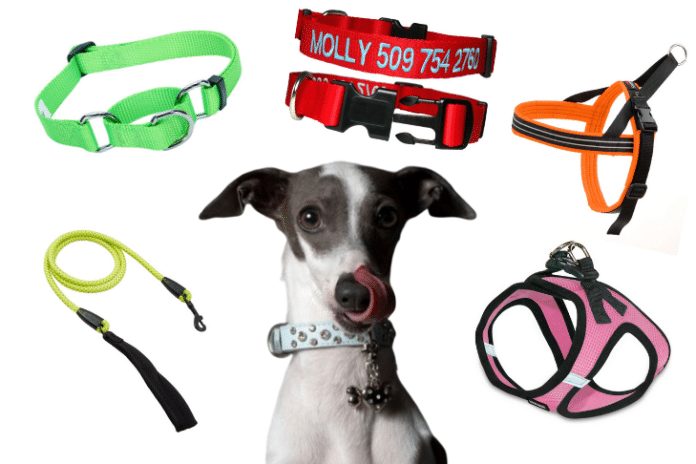
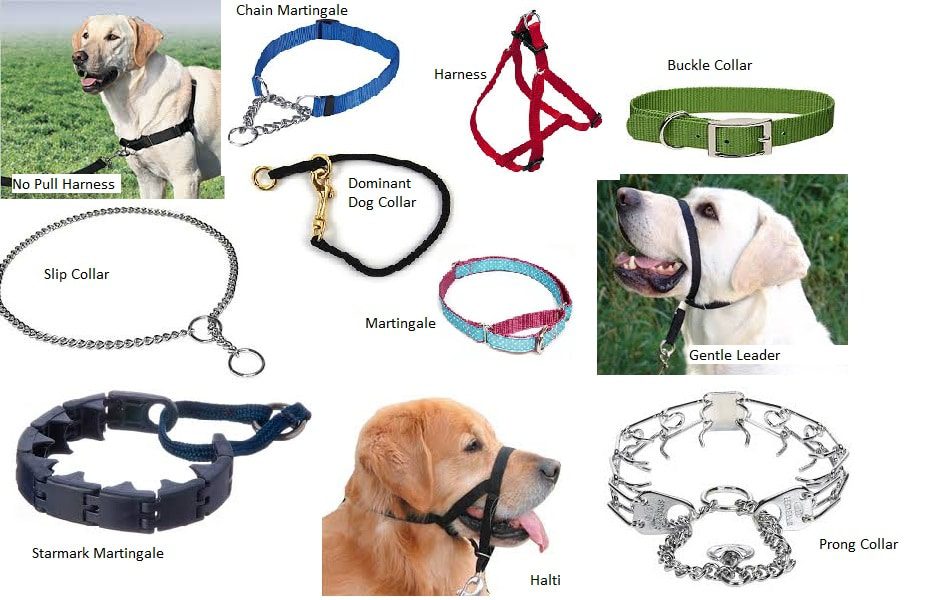


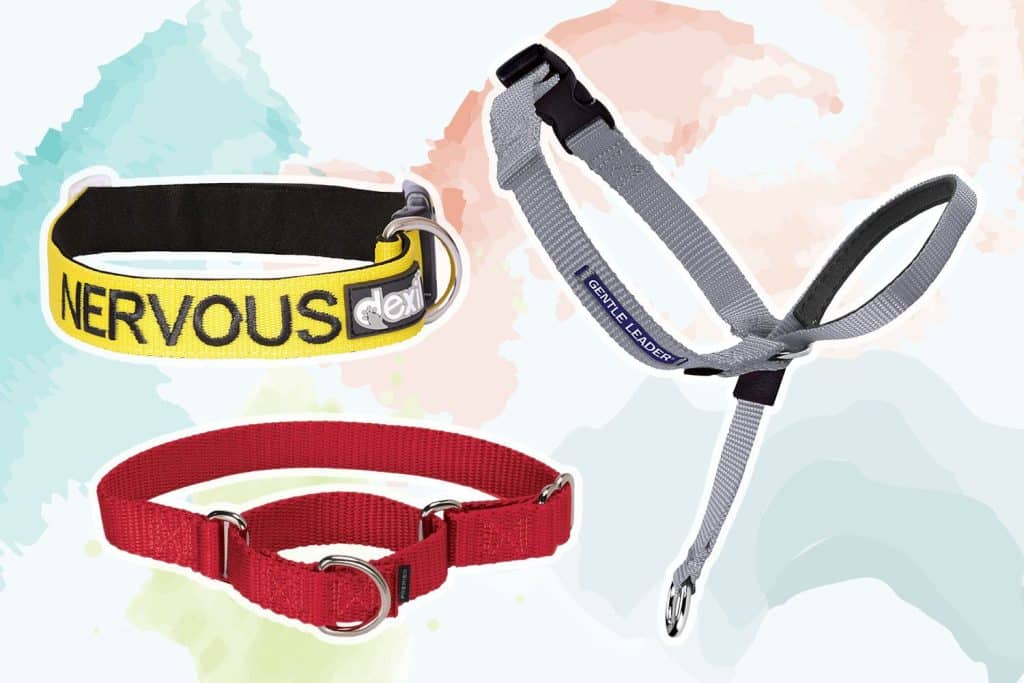
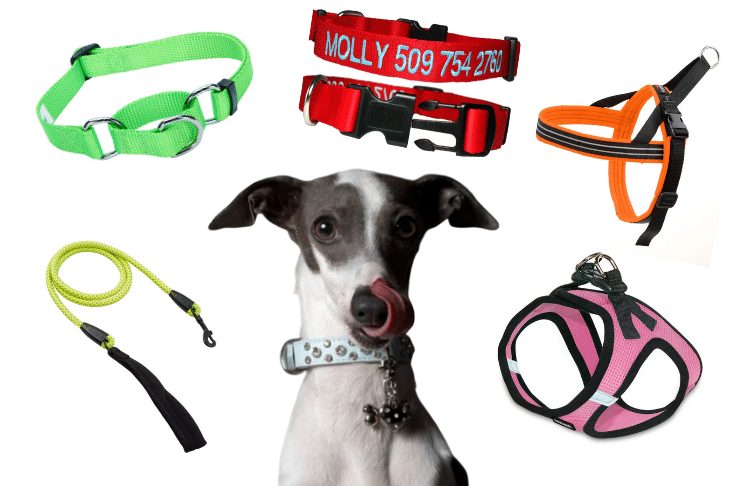





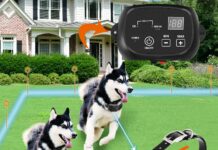


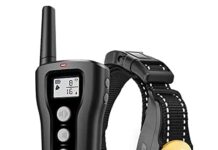
![Petrainer Dog Training Collar [100% Waterproof] Petrainer Dog Training Collar](https://mydogtrainingcollar.com/wp-content/uploads/2019/03/Petrainer-Dog-Training-Collar-218x150.jpg)


































